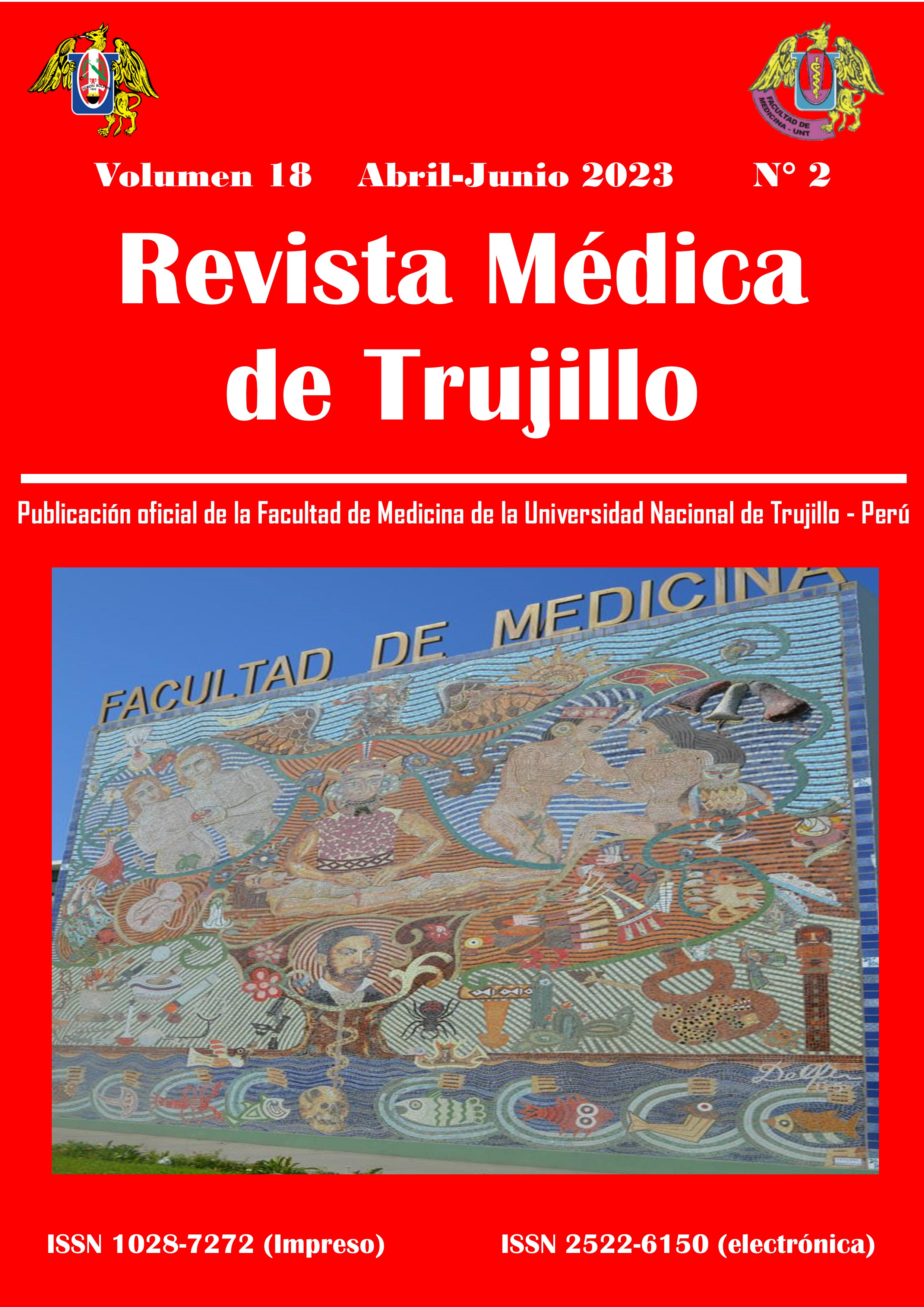Gasometría arterial y retinopatía en prematuros de muy bajo peso al nacer.
Arterial blood gas and retinopathy in very low birth weight premature infants.
DOI:
https://doi.org/10.17268/rmt.2023.v18i2.5106Keywords:
Retinopathy of Prematurity, preterm infant, hyperoxia, hypoxia, acidosisAbstract
Objetive: To determine if arterial blood gas alterations are associated with retinopathy in very low birth weight premature infants. Methods: Observational, analytical, retrospective and longitudinal study, design of cases and controls. Medical records of premature infants born at the Hospital Belén de Trujillo (2013-2017) were reviewed. The association between each alteration in arterial blood gas and ROP was evaluated with the chi-square test and multivariate logistic regression analysis was used to adjust for the effect of the remaining alterations. Results: There were 49 cases and 147 controls. Hyperoxemia, gestational age <28 weeks, birth weight <1 000 grams, resuscitation, intubation, apgar <7 at minute, and mechanical ventilation were associated with ROP (p <0,05). Cesarean delivery was a protective factor for ROP (p <0,05). In the multivariate analysis, the only significant coefficient associated with ROP was gestational age <28 weeks with OR = 7,34. Conclusion: Hyperoxemia is the gasometric alteration associated with ROP, but the factor that significantly influences the estimation of ROP is gestational age <28 weeks, which increases the risk 7,34 times.
Downloads
Published
How to Cite
Issue
Section
License
Copyright (c) 2023 Revista Médica de Trujillo

This work is licensed under a Creative Commons Attribution-NonCommercial 4.0 International License.










